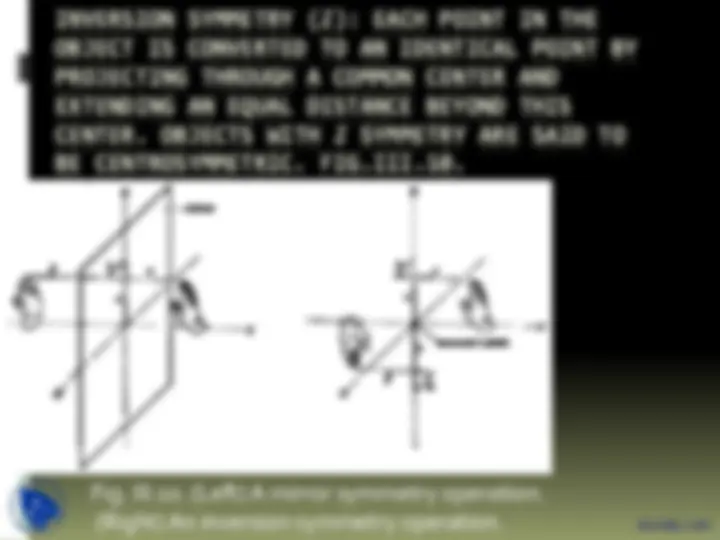








Study with the several resources on Docsity

Earn points by helping other students or get them with a premium plan


Prepare for your exams
Study with the several resources on Docsity

Earn points to download
Earn points by helping other students or get them with a premium plan
Community
Ask the community for help and clear up your study doubts
Discover the best universities in your country according to Docsity users
Free resources
Download our free guides on studying techniques, anxiety management strategies, and thesis advice from Docsity tutors
This presentation is part of Solid State Physics course requirement at Guru Jambheshwar University of Science and Technology. It includes: Multiple, Symmetry, Inversion, Brillouin, Zone, Point, Center, Molecule, Indistinguishable, Form, Equidistant
Typology: Slides
1 / 10

This page cannot be seen from the preview
Don't miss anything!







The inversion operation occurs through a single point called the inversion center , i , located at the center of the molecule. (Note that the inversion center may or may not coincide with an atom in the molecule.) Each atom in the molecule is moved along a straight line through the inversion center to a point an equal distance from the inversion center. If the resulting configuration is indistinguishable from the original, we say there exists an inversion center in the molecule.
The diagram below illustrates the simplest of these inversion axes, namely that of inversion at a point, -1, where the symbol for the point of inversion is a small open circle:
In the previous figure, every point in the molecule (which happens to be an organic molecule called D - alanine) in the left-hand side of the figure, may be inverted through the inversion point so as to generate the molecule on the right-hand side ( L -alanine, the chemical name name being the same except for the labels D and L which emphasise the difference in handedness ). A point of inversion at the origin has the symmetry operator - x ,- y ,- z. Objects possessing this symmetry element are frequently described as centrosymmetric.
INVERSION SYMMETRY ( I ): EACH POINT IN THE OBJECT IS CONVERTED TO AN IDENTICAL POINT BY PROJECTING THROUGH A COMMON CENTER AND EXTENDING AN EQUAL DISTANCE BEYOND THIS CENTER. OBJECTS WITH I SYMMETRY ARE SAID TO BE CENTROSYMMETRIC. FIG.III.10.
Fig. III.10. (Left) A mirror symmetry operation. (Right) An inversion symmetry operation. docsity.com